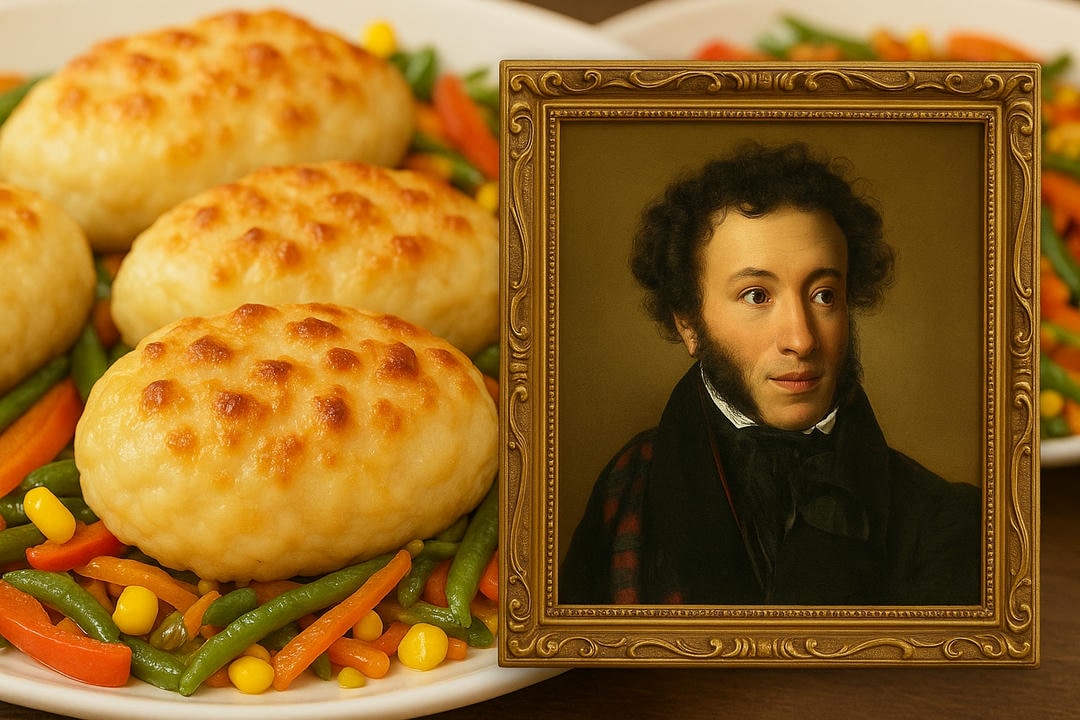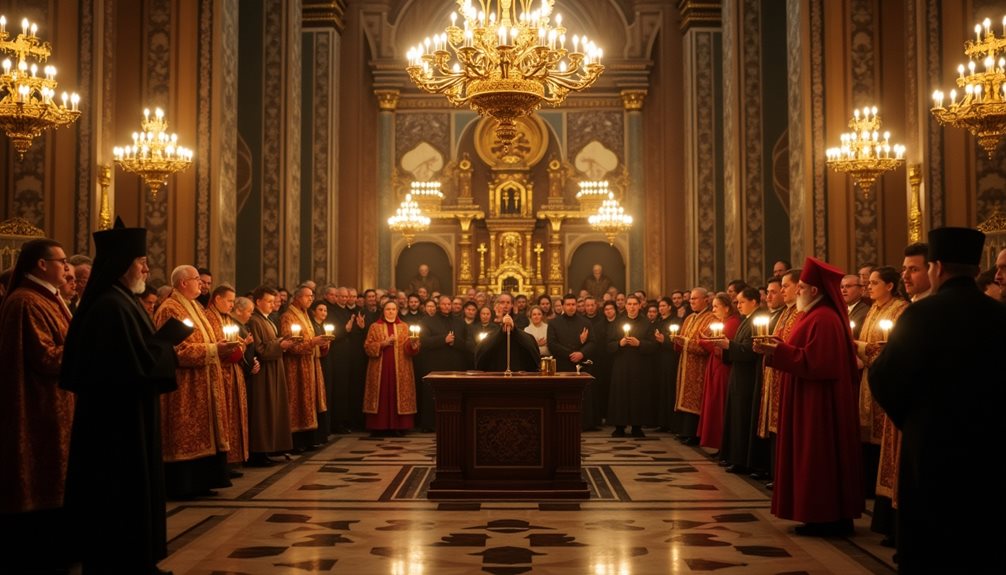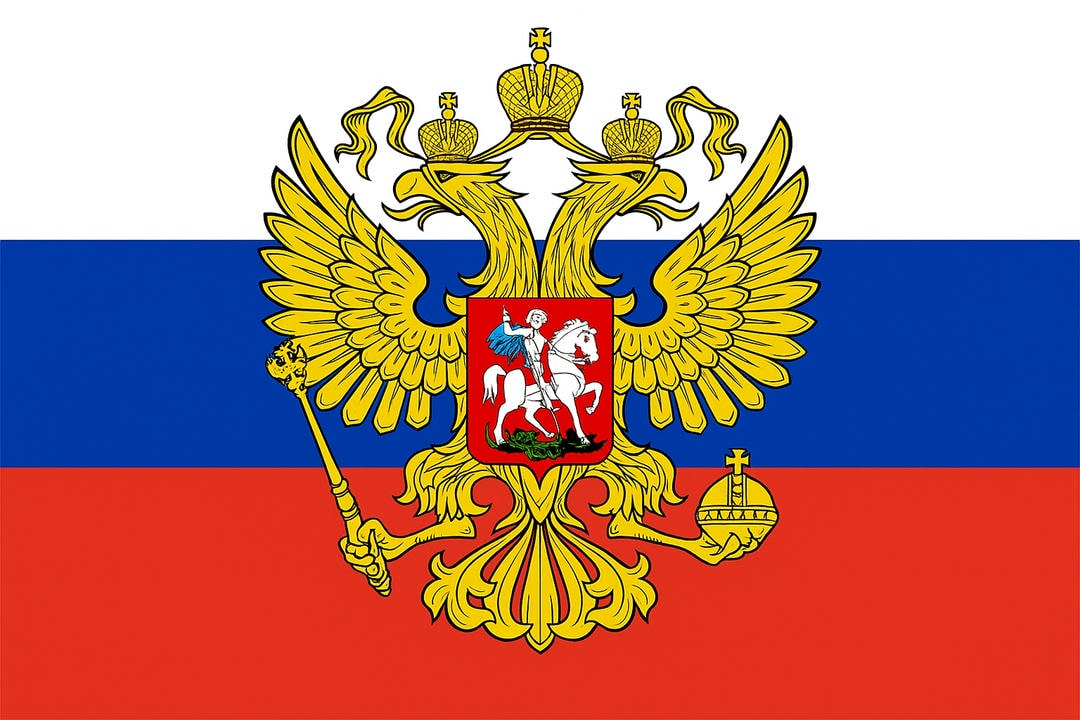The Pozharsky cutlet, often linked to Alexander Pushkin, offers more than a simple culinary delight; it encapsulates a historical narrative rooted in early 19th-century Russia. Originating from a modest family tavern in Torzhok, the dish’s distinctive preparation reveals intricate techniques and regional influences. Understanding its unique characteristics and the poet’s endorsement provides insight into its enduring cultural resonance, prompting further exploration of how gastronomy and literature intertwine within Russian heritage.
The Origins of Pozharsky Cutlet

The Pozharsky cutlet is a classic dish with roots deeply embedded in early 19th-century Russian culinary history. Its origin is traced to the town of Torzhok, situated between Moscow and St. Petersburg, where it was first created in a provincial tavern owned by the Pozharsky family. This period marked a significant phase in Russian cuisine, characterized by the blending of traditional local flavors with new culinary influences emerging across the country.
The dish emerged not only from local tastes but also from the evolving social and cultural environment of the time. The tavern where it was born attracted a range of visitors, including prominent cultural figures, which contributed to its growing popularity. The Pozharsky cutlet exemplifies a moment of culinary transformation in Russia, combining rustic simplicity with refined techniques, making it a pioneer in the synthesis of tradition and innovation in Russian gastronomy.
![]()
The Role of Taverns and Inns in Russian Social Life
The tavern culture in early 19th-century Russia was more than just a place to eat; it was a vital social hub where travelers, merchants, artists, and locals gathered to exchange ideas, stories, and news. The Pozharsky family tavern in Torzhok was one such place, known not only for its food but also for its lively atmosphere that fostered cultural exchange. This setting helped popularize the cutlet among diverse social circles and contributed to the dish’s reputation beyond the Tver region.
Unique Characteristics of the Pozharsky Cutlet
What sets the Pozharsky cutlet apart from other meat dishes in Russian cuisine is its distinctive texture and preparation method. The cutlet features a crisp, golden breadcrumb crust that provides a satisfying crunch upon biting. Inside, it contains tender, juicy minced chicken mixed with generous amounts of butter. This combination creates a contrast between the crunchy exterior and the moist, flavorful interior.
The butter-enriched filling ensures the meat remains succulent and delicate, enhancing the natural sweetness of the poultry without overpowering it. This careful balance of ingredients and cooking technique results in a dish that is both rich and light, offering a complex flavor profile and a pleasing mouthfeel. The Pozharsky cutlet is celebrated not only as a culinary masterpiece but also as a symbol of Russian hospitality and culinary heritage.
![]()
The Culinary Technique: Why Butter Matters
A key secret to the Pozharsky cutlet’s tenderness lies in the generous use of butter mixed directly into the minced meat. Butter is not just a fat for flavor; it acts as a moisture-retaining agent that keeps the cutlet juicy even after frying. This technique was innovative at the time and reflects Russian culinary ingenuity in enhancing simple ingredients to create complex textures and tastes. For foreigners, this highlights how Russian cuisine balances richness with subtlety, a feature that often surprises those unfamiliar with traditional dishes.
Alexander Pushkin’s Connection to the Dish
The Pozharsky cutlet’s cultural significance is further elevated by its association with Alexander Pushkin, one of Russia’s most revered poets and literary figures. Pushkin’s connection to the dish highlights the intersection between Russian gastronomy and literary history during the early 19th century.
In 1826, Pushkin recommended to his friend Sobolevsky that he “dine in the Pozharsky Inn in Torzhok with fried cutlets,” demonstrating his personal endorsement and appreciation for the dish. This recommendation was more than a casual culinary tip; it reflected the growing prestige of the Pozharsky cutlet among Russia’s intellectual and artistic circles.
Legend also suggests that Pushkin drew inspiration from his visits to the tavern, even naming a character after signage observed there, embedding the dish within his creative world. Through Pushkin’s association, the Pozharsky cutlet transcends its role as a mere dish—it becomes a cultural artifact linking Russian cuisine to the nation’s rich literary tradition.
Pushkin’s Broader Influence on Russian Food Culture
Pushkin’s influence on Russian culture goes beyond literature; his life and works often featured Russian customs, including food. His appreciation of the Pozharsky cutlet is emblematic of how food and art intersected during his era. Pushkin’s writings helped immortalize many aspects of Russian daily life, and his culinary endorsements encouraged an elevated status for regional dishes—transforming them into symbols of national pride. This connection invites foreigners to see Russian cuisine not only as sustenance but as part of a larger cultural narrative intertwined with the country’s artistic legacy.
Pozharsky Cutlet in Modern Russian Cuisine
Pozharsky cutlets remain a beloved staple in Russian dining, widely featured in both home kitchens and restaurant menus across the country. This classic dish, renowned for its tender, juicy interior and crispy golden crust, continues to captivate diners with its rich history and comforting flavors.
In contemporary Russian cuisine, chefs and home cooks alike have embraced creative adaptations of the traditional Pozharsky cutlet. While the original recipe calls for finely minced chicken or veal mixed with butter and breadcrumbs, modern variations often include alternative meats such as turkey, pork, or even fish to cater to diverse tastes and dietary needs. Vegetarian versions using mushrooms or plant-based proteins have also emerged, reflecting growing interest in meatless options.
The incorporation of different fillings—ranging from herbs like dill and parsley to cheese or finely chopped vegetables—allows for nuanced flavor profiles that appeal to a broader audience. These modifications preserve the essential qualities of the dish: a moist, flavorful center coated with a crispy breadcrumb crust, typically pan-fried to a perfect golden brown.
Presentation has also evolved in contemporary settings. Many restaurants focus on plating Pozharsky cutlets with complementary sides such as creamy mashed potatoes, sautéed mushrooms, fresh vegetable medleys, or light salads dressed with traditional Russian vinaigrettes. Garnishes like fresh herbs or subtle sauces enhance both visual appeal and taste, aiming to attract younger diners without straying too far from the dish’s roots.
This balance between tradition and innovation highlights the enduring cultural significance of Pozharsky cutlets in Russia’s modern culinary scene. The dish acts as a bridge between historical heritage and current food trends, embodying comfort, craftsmanship, and adaptability. Its continued popularity attests to how timeless recipes can evolve while maintaining their iconic identity.
In summary, Pozharsky cutlets today symbolize more than just a meal; they represent a connection to Russian history and culinary artistry enriched by contemporary creativity. This versatility ensures the dish remains a cherished part of Russia’s food culture for generations to come.
Cultural Significance and Related Russian Traditions
Pozharsky cutlets (пожарские котлеты) hold a significant place in Russian culinary tradition, representing much more than just a beloved dish. Their presence in contemporary Russian cuisine serves as a vivid link between the past and present, embodying the cultural identity and historical continuity of Russia.
These cutlets originated in the early 19th century and are named after the Pozharsky family, specifically associated with a famous inn in the town of Torzhok (Торжок). They gained popularity due to their unique preparation—minced chicken or veal mixed with butter, creating a tender and juicy texture inside a crispy breaded crust. This culinary technique highlights the resourcefulness and refinement of Russian provincial cooking during that era.
Pozharsky cutlets have transcended their role as mere food items to become symbols of Russian heritage (наследие). Their connection to Alexander Pushkin (Александр Пушкин), one of Russia’s greatest poets, adds a layer of cultural depth. Pushkin’s frequent references to traditional Russian life and cuisine help bridge literature (литература) with gastronomy (гастрономия), reinforcing the dish’s role as a cultural touchstone.
The dish is often served during festive occasions and family gatherings, emphasizing the importance of food in social traditions (социальные традиции). Pozharsky cutlets, along with other classic dishes like borscht (борщ), pelmeni (пельмени), and blini (блины), act as tangible representations of collective memory (коллективная память). They evoke feelings of nostalgia and pride, reminding Russians of their shared history and values.
The enduring popularity of Pozharsky cutlets illustrates several key cultural aspects:
- Preservation of Tradition (Сохранение традиций): The recipe has been passed down through generations, often prepared at home or featured in traditional restaurants, highlighting the value placed on maintaining culinary heritage.
- Symbol of Hospitality (Символ гостеприимства): Serving these cutlets is seen as a gesture of warmth and generosity, reflecting the Russian custom of welcoming guests with hearty, comforting food.
- Connection to Regional Identity (Связь с региональной идентичностью): Originating from the Tver region, the dish reflects regional pride and contributes to the diversity within Russian cuisine.
- Cultural Education (Культурное воспитание): Learning to make Pozharsky cutlets is often part of family traditions, helping younger generations appreciate their roots and the significance of national cuisine.
Moreover, Pozharsky cutlets are more than just a delicious dish; they are a cultural artifact that celebrates Russian history, literature, and social customs. Through this food, Russians connect with their past, express hospitality, and affirm their national identity. The dish’s continued relevance underscores how food can serve as a powerful medium for cultural transmission and collective pride.
![]()
Pozharsky Cutlets as Part of Russian Festivities
Pozharsky cutlets are often served during major Russian holidays such as New Year’s Eve (Новый год) and Maslenitsa (Масленица), a week-long festival celebrating the end of winter with rich foods and lively gatherings. Their presence at these celebrations showcases how food plays a central role in marking seasonal changes and communal joy in Russia. For foreigners, understanding these festive contexts offers insight into how traditional dishes like the Pozharsky cutlet maintain their relevance as more than everyday food—they are integral to cultural rituals and shared memories.
The Lasting Legacy of the Pozharsky Cutlet in Russian Culture
The Pozharsky cutlet is far more than a dish; it is a symbol of Russia’s rich heritage where culinary art meets history and literature. Born in a humble tavern yet embraced by great minds like Alexander Pushkin, the cutlet represents the harmony between tradition and innovation that defines Russian cuisine. Its unique preparation, cultural significance, and continued presence in both festive celebrations and everyday meals highlight its role as a living link to the past. By savoring this iconic dish, one tastes not only exquisite flavors but also centuries of Russian social life, artistry, and pride. The Pozharsky cutlet remains a timeless emblem of hospitality, regional identity, and cultural continuity that continues to inspire chefs and delight diners today.




